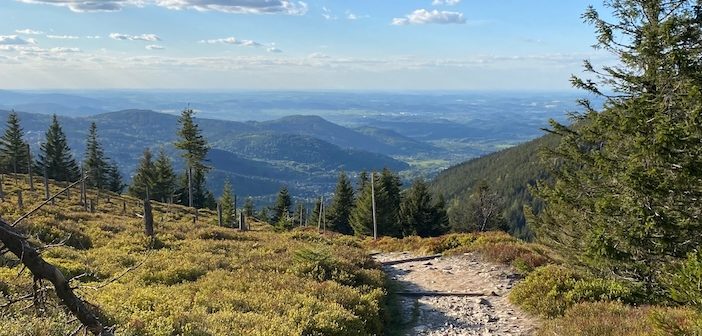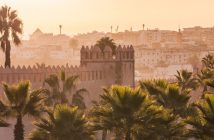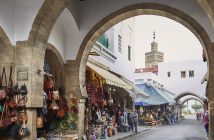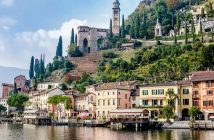As Europe’s tourist hotspots groan under their own popularity, Larry finds refuge in a lesser-known Polish resort where the forest is deep, the legends are darker, and the breakfast buffet includes a rack of sausages…
For all the red pins I’ve dropped on the map of Europe over the years, there remain pockets that defy both expectation – and pronunciation. One such place is a tucked-away corner of southwest Poland, where vowels and consonants wrestle in unfamiliar combinations – yet the reward for linguistic bravery is a continent’s best-kept secret, gloriously devoid of stag parties and selfie sticks.
 Wrocław (that’s ‘Vrotzwov’, if you please), was my first port of call, a city so charmingly eccentric it’s become known as the ‘City of Dwarves’. Not for its population, I hasten to add, but for the 800 or so miniature bronze sculptures peppered across the city. They’re everywhere; each tucked into doorways and crouched under benches like mischief-making mascots. Originally a tribute to the anti-Communist movement, they’ve now spawned into a kind of whimsical treasure hunt for the idle flâneur. If you’re not looking, they’ll pass you by, but once you start, it’s all you can do to stop. I found myself crouched beside one wielding a baguette like a sword. Why? I’ve no idea. Nor how long I’d been there before I noticed a small crowd gathering to photograph us both.
Wrocław (that’s ‘Vrotzwov’, if you please), was my first port of call, a city so charmingly eccentric it’s become known as the ‘City of Dwarves’. Not for its population, I hasten to add, but for the 800 or so miniature bronze sculptures peppered across the city. They’re everywhere; each tucked into doorways and crouched under benches like mischief-making mascots. Originally a tribute to the anti-Communist movement, they’ve now spawned into a kind of whimsical treasure hunt for the idle flâneur. If you’re not looking, they’ll pass you by, but once you start, it’s all you can do to stop. I found myself crouched beside one wielding a baguette like a sword. Why? I’ve no idea. Nor how long I’d been there before I noticed a small crowd gathering to photograph us both.
The old town, meanwhile, is a visual feast: pastel-hued facades, Gothic spires and one of the oldest restaurants in Europe tucked under the town hall, where herring and history are both served cold. The Hansel and Gretel tenements provide a storybook backdrop, and the city’s grand cathedral, university, and riverside parks offer a respite from the urban bustle.
 Speaking of revival, the new Mövenpick hotel – yes, that Mövenpick, purveyors of ice cream and now, apparently, Polish hospitality – has taken up residence in the beautifully restored Grand Hotel from 1904. Empty for two decades, its rebirth is a bellwether for the city’s blossoming status on the tourist radar. Situated opposite the train station, that looks more like a Prussian castle than a transit hub, the hotel embodies Wrocław’s curious blend of grandeur and whimsy, retaining much of its fin de siecle finery, with some contemporary twists – not to mention a rather delectable ice cream cafe, as one might expect.
Speaking of revival, the new Mövenpick hotel – yes, that Mövenpick, purveyors of ice cream and now, apparently, Polish hospitality – has taken up residence in the beautifully restored Grand Hotel from 1904. Empty for two decades, its rebirth is a bellwether for the city’s blossoming status on the tourist radar. Situated opposite the train station, that looks more like a Prussian castle than a transit hub, the hotel embodies Wrocław’s curious blend of grandeur and whimsy, retaining much of its fin de siecle finery, with some contemporary twists – not to mention a rather delectable ice cream cafe, as one might expect.
Of course, Wrocław has not escaped the inevitable march of the guidebook-toting hordes, but step outside the city limits and the real adventure begins. For me, that meant a two-hour journey south into the Karkonosze Mountains – Poland’s alpine answer to the Tatras, but with far fewer ski suits and a good deal more soul.
The drive itself was an overture in mustard yellow: endless rapeseed fields under high blue skies, before we climbed into forested hills and arrived in Karpacz, a town as winsome as its name is obscure. A resort with alpine leanings and an undeniable upward trajectory, Karpacz is already a firm favourite among Czechs, Germans, and in-the-know Poles. Yet for many Western Europeans, it’s still off-grid – which is, frankly, part of the charm.
And yes, Mövenpick have followed me here, too, like a very stylish stalker. Their latest outpost is nestled at the edge of the forest, all glass and pine, blending into its surroundings like a high-end treehouse. Mrs L was less convinced. “Mövenpick?” she sniffed, “Are you staying in a freezer?” But with 134 properties globally, from Istanbul to Cebu, the brand clearly knows a thing or two about comfort. And in Karpacz, they’re putting it all to good use.
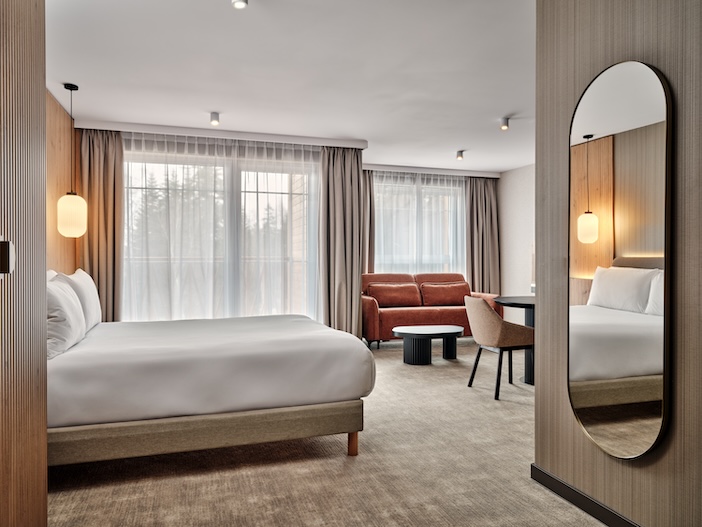
The rooms are a masterclass in alpine chic, with subtle touches that seem insignificant but make all the difference: heated bathroom floors, anti-fog mirrors, and light ‘kill’ switches you don’t have to hunt for in the dark like a mole. The coffee is as good as the pillows are plush, and then there’s the chocolate. Ah yes, the chocolate. Where most hotels offer a cooking class, Mövenpick offers a ‘chocolate class’, complete with tempering, moulding, and the chance to take home something bespoke. The gift I concocted for my Little Nest of Vipers looked like a Picasso lollipop after a minor earthquake, but it’s the thought (and sugar) that counts. There’s a ‘Chocolate Hour’ that stands in for afternoon tea, and chocolate also features in spa treatments, should you wish to be exfoliated like a dessert.
The restaurant is another revelation, resuscitating traditional Polish dishes with panache. Here were several dishes which felt like I was experiencing them for the first time; sour rye soup, stewed cabbage rolls, deer carpaccio and beetroot dumplings, all worlds apart from the meat-heavy clichés I had braced for. And then came a breakfast buffet the size of Lichtenstein. Not just fruit, pastries, and eggs, but herrings, terrines, and pickled everything – even plums. There was even a rack of sausages. Where most hotels offer bread to self-slice, Poland offers sausages.
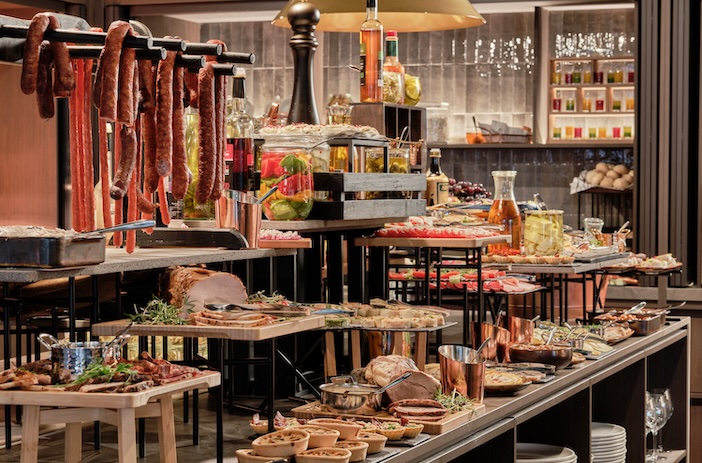
But what makes the place truly special is its bond with nature. The hotel borders a protected forest, where beyond, trails snake up into the mountains. And that immersion in nature truly comes into its own on the hikes, with trails leading directly from the hotel to the summit of Mount Śnieżka – a three-hour climb for the hardy, or, in my case, a brief cable car ride followed by a rigorous 45-minute ascent.
From the disused weather station at the top, the views stretch across the range and into Czechia. One of the things I love most about travel – discovery aside – is the quiet thrill of crossing borders. Here, I found myself walking along one, dipping in and out of Poland and Czechia as the descent followed the crest of the Karkonosze, which forms the natural boundary between the two. The path winds gently down through a sylvan idyll of pine forests and stream-crossed glades, all birdsong and stillness.

Legends whisper through these woods, too. The Karkonoski Mountain Spirit, a kind of Silesian chimera, is said to haunt the hills, and a beautifully curated exhibit in town brings the region’s myths to life with animatronic mandrakes and morality tales to chill and charm in equal measure. J.K. Rowling fans will find familiar ground here – though sadly no sign of a butterbeer.
And then there’s Wang Church. Yes, that Wang Church. Improbably transplanted piece-by-piece from Norway in the 19th century, it’s one of only two stave churches outside Scandinavia. Its timbered frame, all dragon heads and medieval joinery, looks like a Tolkien sketch come to life – an improbable slice of Norse serenity deep in Polish heartland.

Karpacz, it turns out, is an antidote. To the cynicism of over-tourism, to the fatigue of familiar places, to the culinary monotony of hotel menus. It’s alpine but accessible, luxurious but grounded, and though it’s beginning to attract attention, it still feels like a place you can discover. I left with legs sore from hiking, lips tingling from beetroot, and an alarming amount of pickled things in my luggage.
Most importantly, I didn’t hear a single English accent the entire time. Not one.
And that, dear reader, is bliss.
For more information about Movenpick Spa and Resort Karpacz, including details of offers and attractions around Karpacz, please visit www.movenpickkarpacz.pl.
For more information about Movenpick Wrocław, please visit www.allaccor.com.
Photos by the author. Hotel images courtesy of Movenpick.

